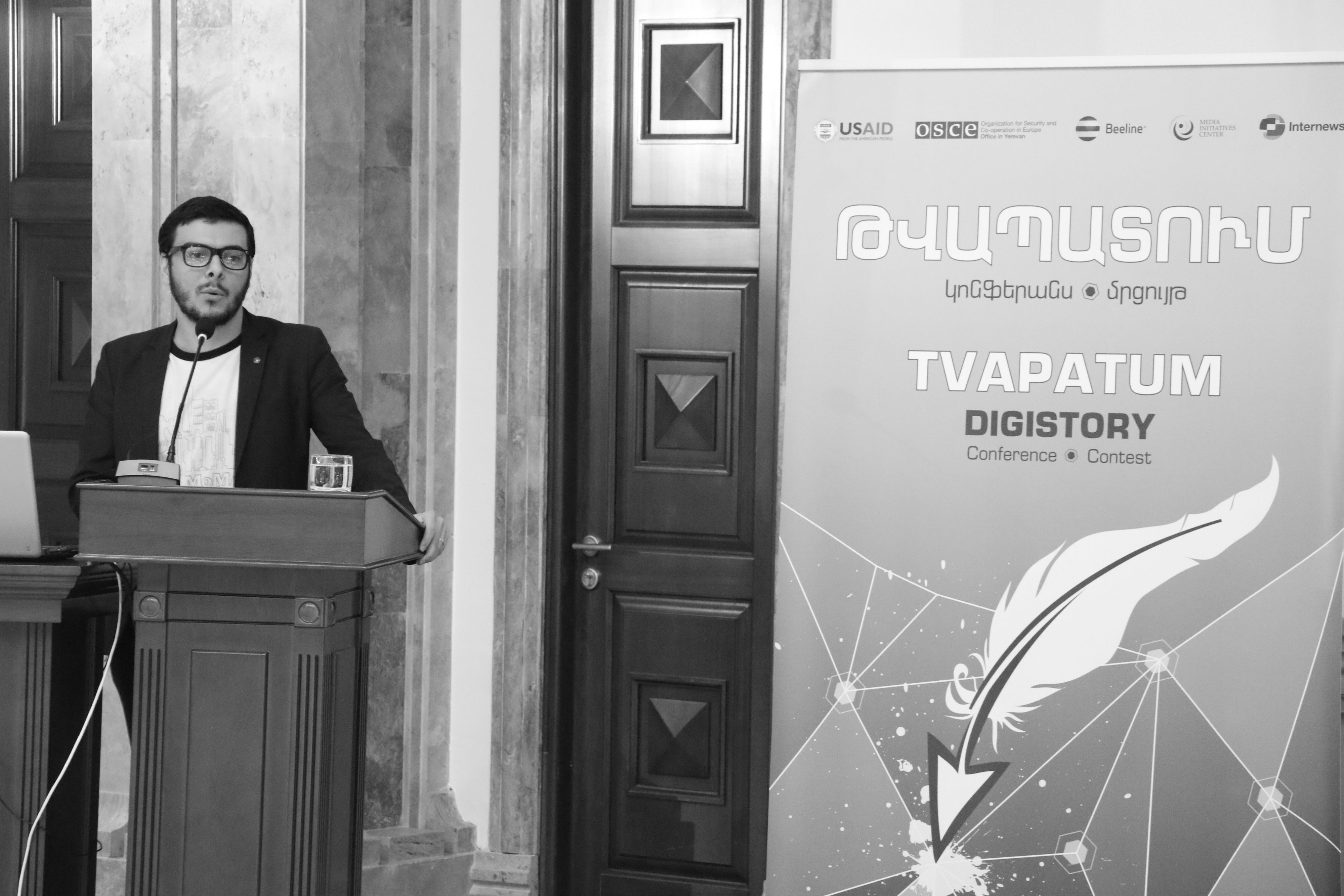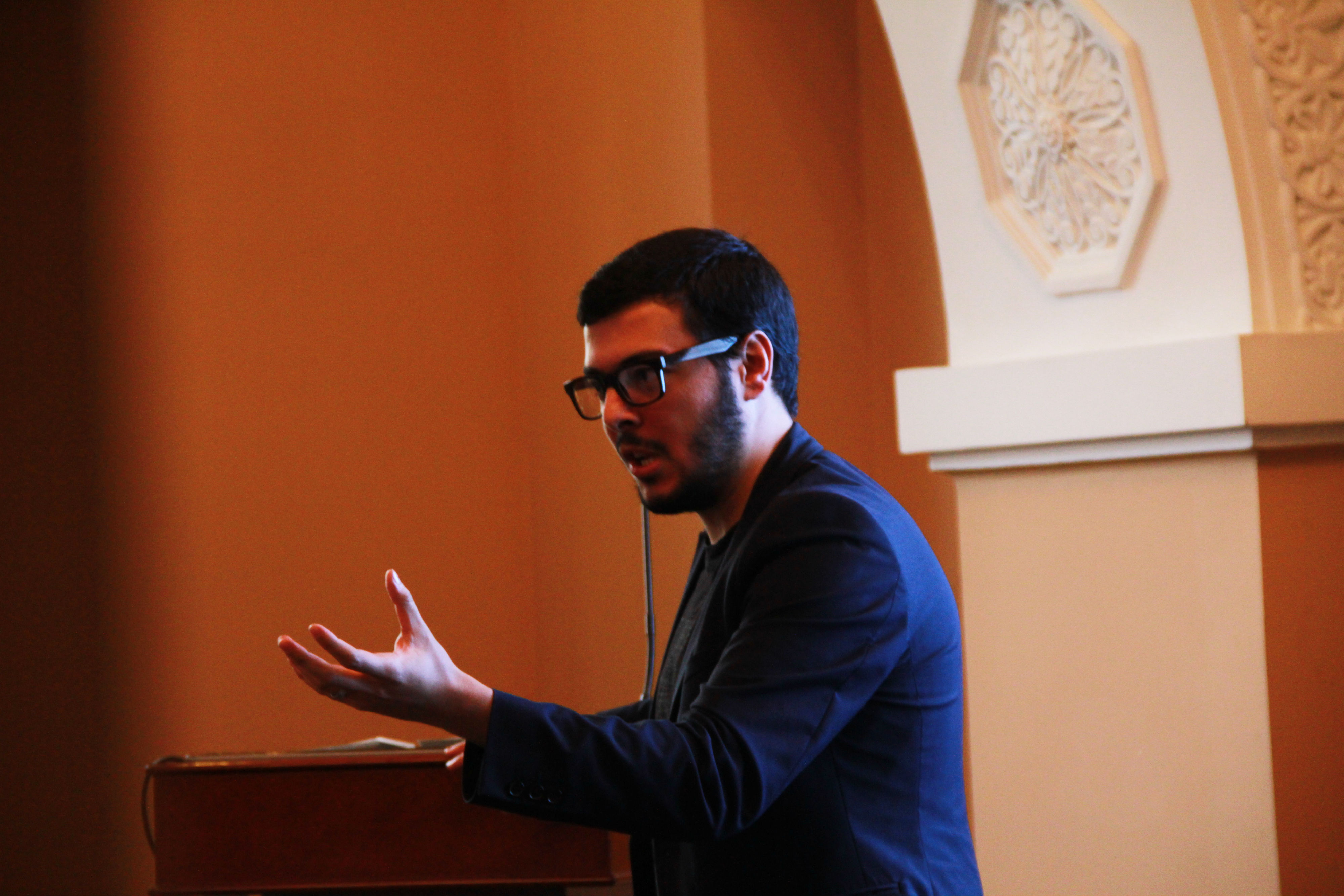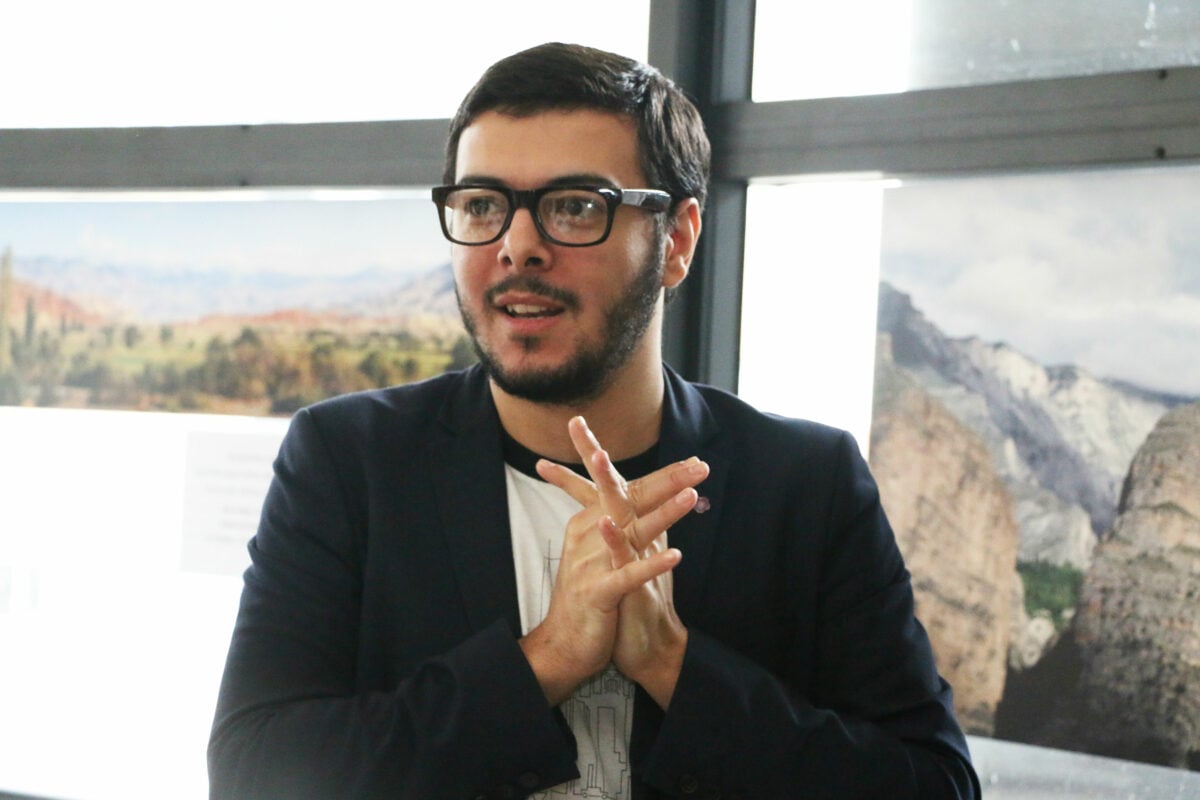Journalist and producer of multimedia projects Artyom Galustyan considers journalism to be a story composed of different components, where not only are facts important, but also emotional charge. “How” is no less important for him than “what”.
He has worked at “Kommersant” as a special projects editor, prepared “Land of Exclusion”, “The Day the War Ended” multimedia long-reads. Now he is bringing his own projects to life and acts as a consultant.
During the “Tvapatum” media conference, he explained the skills necessary for creating multimedia stories and gave a master class with Armenian journalists.
To prepare multimedia stories Artyom Galustyan must consider a few components: an exclusive story, an emotional charge, and the potential to turn it digital, and he tries to promote those expensive, detailed, compelling formats in Armenia.
Why do you think that multimedia stories are relevant? Especially when consumers of information read leaflets of quickly composed news?
The format of multimedia stories, which is already condensed, massive and costly and requires a deep analysis of a topic and teamwork, is the format which characterizes true journalism.
This format is a hybrid mechanism, and for it to work it needs to be multifunctional.
I think that now is the time where it is necessary to bring back the culture of long-reads and diving into a topic, which, if we speak honestly, is disappearing now under the influence of the daily news’ strong flood.
Now the news is presented as short and small “news snacks”, which in all cases fragment reality. I don’t want to criticize journalists who write the news at all, because that is a natural approach to the fast flow of events, and to the growth of communication channels. Of course, people want to be informed of what is happening by their side in essentially real time, but in any case it is necessary to return to meaningfully reading in-depth topics.
With old methods (for example, magazines with long form reports) that is not possible. Old methods are already not competitive, because during the struggle it has joined multimedia.
Me and my colleagues succeeded in using multimedia stories to bring attention to important topics rapidly and with focus, than if we had tried doing that with a newspaper or magazine’s short series of articles.
Different media have different ways to use this format. Newspapers and editorials, which are traditionally associated with words, establish text long-reads, and television puts the emphasis on the web documentary, which presents the documentary data as a visual component.
Generally, the format of multimedia stories is very flexible and easily adapts to the objectives. In its production, it is very similar to a film, because its roots are stretched from documentary films and feature journalism. That documentary is one mix of PR, marketing, which uses representational art forms: widescreen, special effects, rhythm and more.
The journalist usually conceals his/her thoughts, feelings in his/her text, under a pile of facts. And film, by contrast, emphasizes the author’s voice.
In multimedia stories there is also the author’s artistic reinterpretation (which is not found in traditional journalism). Essentially, authors are able to emphasize certain logical nodes, impose new meanings, convey their own vision.
 The journalist also cannot play too often with metaphors and cannot interfere in the development of real situations. Let me bring as an example our long-read about the Chernobyl disaster. There was one segment, which showed the effects of the explosion of the nuclear power plant, we placed that, coupled with the first call reporting the accident, in which the dispatcher did not yet understand the magnitude of the horror that just happened.
The journalist also cannot play too often with metaphors and cannot interfere in the development of real situations. Let me bring as an example our long-read about the Chernobyl disaster. There was one segment, which showed the effects of the explosion of the nuclear power plant, we placed that, coupled with the first call reporting the accident, in which the dispatcher did not yet understand the magnitude of the horror that just happened.
It came to be that we combined the beginning and the end and infringed on the sequence of facts. But that infringement helped establish a mood, emotions and convey a sense of alarm.
In a journalist’s work emotions are missing, only facts are put to work, but the format of multimedia stories is already invested in the topic’s potential emotional coverage.
And can’t personal attitudes and emotions hurt the project?
Abuse of emotions happens. Multimedia projects are very fragile so it is possible for everything to become undone and ruined with one small detail. But because it is cooperative work, the story’s structure will always be checked and double checked by the team members.
Very few types of media can afford to spend the time and human resources to produce multimedia stories. In Armenia, we do not have similar examples.
My manager said that we are doing a very good project, but the video views, in comparison with other subjects, is not a lot. Of course, I understand that he is a manager and must speak like that, but the issue is that in the case of multimedia stories the cost of time and people are not comparable with the amount of views. And it will always be that way.
“Ria Novosti”, for example, turned the story of the “Titanic” ship into a very thorough, detailed, interactive, huge 3D model project. When watching it, it is as if you are traveling right into the ship, the decks furnished with the precision of a documentary. 30 people worked for half a year on that unique project, but the traffic amounted to very little.
“Titanic” was a very good idea brought to life…for the sake of an idea.
And, for example, at the same time one ordinary Russian student, on the eve of the New Year, created an infographic story about “Olivie” salad, which in a few days had millions of views. One person did one hour’s worth of work which fully justified all of the expenses and much more.
What I am saying is that not all subjects can be made into multimedia stories. It is also not necessary to try, if one is not certain that the subject is important. Generally speaking, not all media should create multimedia stories. If you are are exclusively a news website, it is not for you.
Must the subject strike a painful spot?
Not only. It must have a plot, layers of events, problematic ties, a visual presentation, for it to be possible to enable the audience to become part of the story and ensure interactive communication. The content must also be deep, on a large scale and a cause of concern, just as the way it is presented.
The success of multimedia stories cannot be determined by measuring it with statistical data (amount of views, the traffic it generates), because in all cases the traffic and the costs remain disproportionate.
Yes, the media is making a significant contribution in terms of losing traffic, but it wins a quality point of view, because multimedia stories raise the platform’s image.
Are the customers of multimedia stories usually the editorial staff? Or are enthusiasts preparing them and after offering them to different media?
I am certain that in order to create a unique project, the desire of enthusiasts is a type of test, which demonstrates the idea’s viability and importance.
 For example, designer and artist Ksenia Diodorova created, from scratch and with her own strength, the unique project “In the Cold”, about the Tatars who live in Pamir. She collected money by crowdfunding, went to Pamir, lived there for a month, speaking with people and taking photos of their lives. The result was an incredible transmedia project, namely a story, which presented different informational platforms, and from a digital history it turned into an exhibit, later into a printed book, and even later a broadcast. Ksenia was not a journalist, she simply believed in her idea and step-by-step turned it into reality.
For example, designer and artist Ksenia Diodorova created, from scratch and with her own strength, the unique project “In the Cold”, about the Tatars who live in Pamir. She collected money by crowdfunding, went to Pamir, lived there for a month, speaking with people and taking photos of their lives. The result was an incredible transmedia project, namely a story, which presented different informational platforms, and from a digital history it turned into an exhibit, later into a printed book, and even later a broadcast. Ksenia was not a journalist, she simply believed in her idea and step-by-step turned it into reality.
Of course, it is essential to be multifunctional, to cultivate the idea, calculate it and simultaneously be a producer and researcher doing field work.
Generally speaking, I always recommend to think about how you would want to present your story, if there was no internet?
During the master class with Armenian journalists I saw that there are people who already want to turn a documentary film into a multimedia story. After all, if the subject truly concerns the public, it will be a win-win situation to present it with different platforms, because the use of each platform works people’s different senses.
Basically, it is very important to work on a topic following its publication. And if you feel that the subject is important, constantly develop it.
In Armenia (and I think also in Russia) the most-read news is that which is related to the political field. How much can this topic fit in with a multimedia story?
Political shifts can more likely be presented with unique projects, for example, interactive remarks, where the different links to people can be shown as well as the intriguing details and scandals. It is not worth to turn that into a multimedia story.
I think that politics must be addressed through social topics. Or a combination of historical facts. Understand that in the events that have passed it is possible to find a script and a plot, which will help find diplomatic, military, human, fate and other lines that have crossed into the present.
And in the future what topics would be useful as multimedia stories, in the sense of becoming thematic trends?
The field of multimedia is broader than journalism. For example, the museum of Warsaw created an outstanding project, which is not journalistic, but made purely for a museum.
To work with this format television has great potential (professional and financial). Waves of websites are always behind on trends, focused on their “mother” broadcast, and now it seems that they also understand the great power of multimedia.
I am confident that the future of multimedia stories is in the hands of documentaries and television. Especially television documentaries.
A few years ago the Russian “Channel One” showed a film about the flood of the Far East and the thousands of lives lost. That film was an adaptation of a web talk format. Of course it was filled with unjustified pathos, suspense, concentrated terror, with a dynamic was fast-news, but in any case it was a web documentary.
“Al Jazeera” works incredibly, which, for example, created a fantastic film about Syrian refugees in Lebanon. It was more of a documentary web series in multimedia format. The short multimedia stories from “BBC” are very successful.
So the future is news outlets that have a lot of potential directors. That is, they are used to working with images.
Multimedia stories must be created not with words, but with images, rather, people who think in terms of image sequences. I myself always draw out the scenes by hand and teach the same during the master classes. Until you draw it, you won’t be able to get the story.
Multimedia stories also have a great potential for advertising. They will grow the watching audience. Of course, growth is slow, but the quality of the viewers’ perception will increase. Which will eventually contribute to proposals from advertisers.
The issue is also that there is no assurance that the advertiser will not interfere in the content.
Of course they will try to interfere, but that decision is already the domain of the media management. Personally I do not do commercial multimedia projects. I sometimes give advice on how to do them, but I myself work without any connection to advertising materials.
Interview by Nune Hakhverdyan







